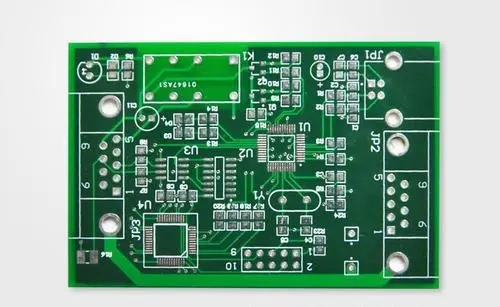1. Component selection and layout
The specifications of each component are different, and even the characteristics of components produced by different manufacturers of the same product may be different. Therefore, for the selection of components during design, you must contact the supplier to understand the characteristics of the components, and know the characteristics of these characteristics. The influence of design.
Nowadays, choosing the right memory is also a very important thing for the design of electronic products. Due to the continuous updating of DRAM and Flash memory, PCB designers want new designs not to be affected by the ever-changing external memory market. It is a big challenge. DDR3 now occupies 85%-90% of the current DRAM market, but it is expected that DDR4 will rise from 12% to 56% in 2014. Therefore, designers must focus on the memory market and maintain close contact with manufacturers.

Components burn out due to overheating
In addition, necessary calculations must be made for some components with large heat dissipation, and their layout also needs special consideration.A large number of components can generate more heat when they are together, which will cause the deformation and separation of the solder mask, and even ignite the entire board. . So design and layout engineers must work together to ensure that the components have a proper layout.
The PCB size must be considered first during layout. When the PCB size is too large, the printed lines will be long, the impedance will increase, the anti-noise ability will decrease, and the cost will increase; if the PCB size is too small, the heat dissipation will not be good, and adjacent lines will be easily disturbed. After determining the PCB size, determine the location of the special components. Finally, according to the functional units of the circuit, all the components of the circuit are laid out.
Two cooling system
The design of the heat dissipation system includes the cooling method and the selection of heat dissipation components, as well as the consideration of the cold expansion coefficient. At present, PCB heat dissipation mainly uses heat dissipation through the PCB board itself, plus a heat sink and a heat conduction board.
In the traditional PCB board design, because the boards mostly use copper clad/epoxy glass cloth substrates or phenolic resin glass cloth substrates, and a small amount of paper-based copper clad boards are used, these materials have good electrical and processing properties, but thermal conductivity. Very bad. Since surface mount components such as QFP and BGA are used in large quantities in the current design, the heat generated by the components is transferred to the PCB board in a large amount. Therefore, the best way to solve the heat dissipation is to improve the heat dissipation capacity of the PCB itself that is in direct contact with the heating element. The PCB board conducts or radiates.
When a small number of components in the PCB generate a large amount of heat, a radiator or heat pipe can be added to the heating component, and a radiator with a fan can be used when the temperature cannot be lowered. When the amount of heating devices is large, a large heat dissipation cover can be used, and the heat dissipation cover is integrally buckled on the surface of the element, and it is in contact with each element to dissipate heat. For professional computers used for video and animation production, even water cooling is required for cooling.
Three design for testability
The key technologies of PCB testability include: testability measurement, testability mechanism design and optimization, and test information processing and fault diagnosis. The testability design of the PCB is actually to introduce a certain testability method that can facilitate the test into the PCB, and provide an information channel to obtain the internal test information of the tested object. Therefore, a reasonable and effective design of the testability mechanism is the guarantee for successfully improving the testability level of the PCB. High product quality and reliability, reduce product life cycle costs, require testability design technology to be able to quickly and easily obtain feedback information during testing, and can easily make fault diagnosis based on the feedback information. In PCB design, it is necessary to ensure that the detection position and entry path of the DFT and other probes will not be affected.
With the miniaturization of electronic products, the pitch of components becomes smaller and smaller, and the mounting density will also become larger. There are fewer and fewer circuit nodes available for testing, so the online test of printed board assemblies is becoming more and more difficult. Therefore, the electrical and physical and mechanical conditions of the testability of the printed board should be fully considered when designing. Appropriate mechatronics equipment is tested.
Four moisture sensitivity level MSL
MSL: Moisure Sensitive Level, that is, the humidity sensitivity level, which is stated on the label outside the moisture-proof packaging bag. It is divided into eight levels: 1, 2, 2a, 3, 4, 5, 5a, and 6. Components with special requirements for humidity or humidity sensitive component marks on the packaging must be effectively managed to provide the temperature and humidity control range of the material storage and manufacturing environment, so as to ensure the reliability of the performance of temperature and humidity sensitive components. When baking, BGA, QFP, MEM, BIOS, etc. require perfect vacuum packaging. High temperature resistant and non-high temperature resistant components are baked at different temperatures. Pay attention to the baking time. PCB baking requirements first refer to PCB packaging requirements or customer requirements. The humidity-sensitive components and PCB board after baking should not exceed 12H at room temperature. Unused or unused humidity-sensitive components or PCBs that do not exceed 12H at room temperature must be sealed in a vacuum package or stored in a dry box.